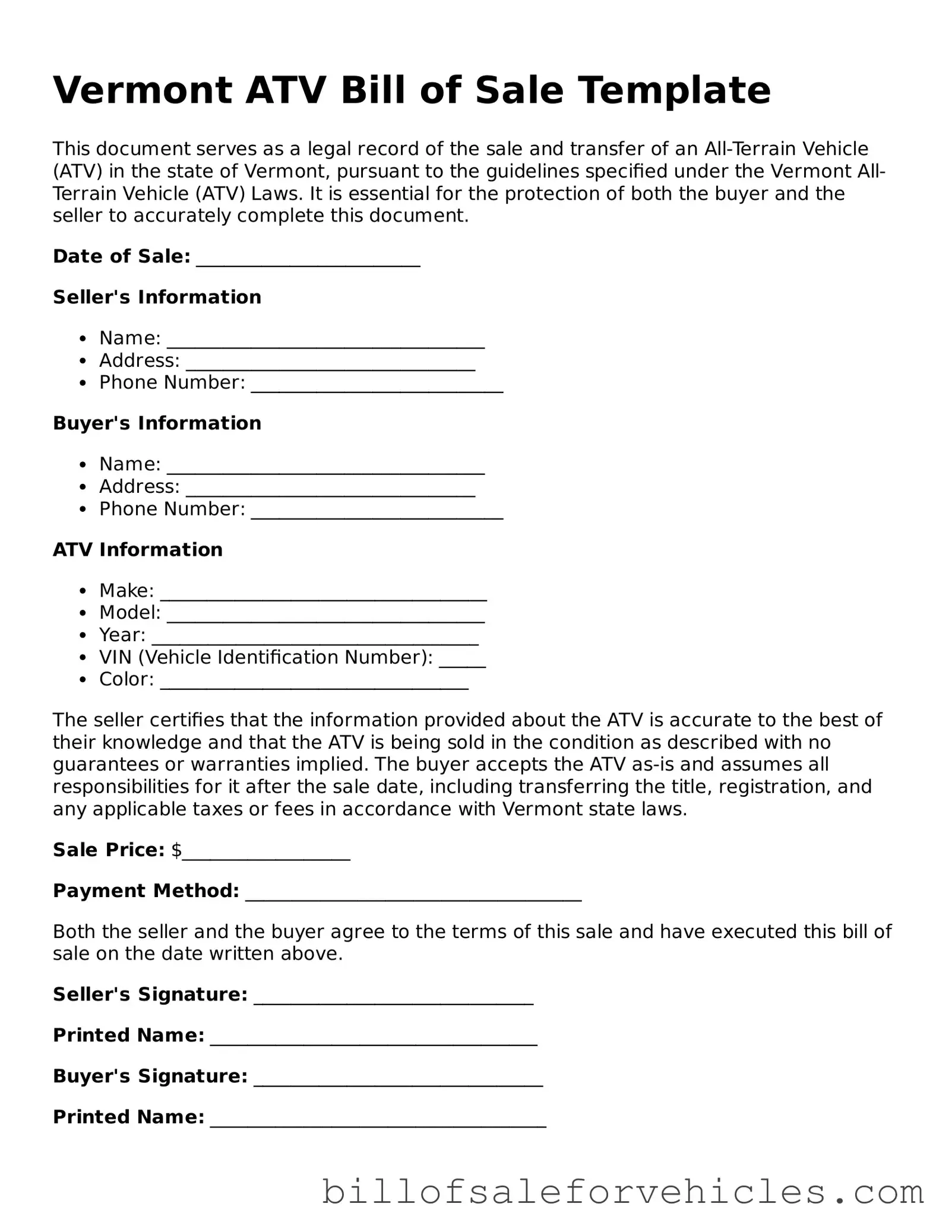What is a Vermont ATV Bill of Sale form?
A Vermont ATV Bill of Sale form is a legal document that records the transfer of ownership of an All-Terrain Vehicle (ATV) from the seller to the buyer. It acts as proof of transaction and includes details such as the make, model, year, and VIN of the ATV, alongside the names and signatures of both parties.
Why do I need an ATV Bill of Sale in Vermont?
In Vermont, an ATV Bill of Sale is crucial for completing the registration process of an ATV with the Department of Motor Vehicles (DMV). It serves as a receipt for the purchase and is needed for the buyer to legally operate the ATV. Additionally, it is useful for tax assessment and personal record-keeping.
What details should be included in a Vermont ATV Bill of Sale?
An effective Vermont ATV Bill of Sale should include the following information: date of sale, names and addresses of the seller and buyer, vehicle description (make, model, year, and VIN), sale price, signatures of both the seller and buyer, and any other conditions or warranties agreed upon.
Is notarization required for an ATV Bill of Sale in Vermont?
While notarization of an ATV Bill of Sale is not mandatory in Vermont, it is recommended. Notarizing the document adds a level of legal authenticity and can protect both parties in case of future disputes.
Can I create my own ATV Bill of Sale for use in Vermont?
Yes, you can create your own ATV Bill of Sale for use in Vermont. Ensure that it contains all required details as outlined above. While several templates are available online, creating a customized bill that meets all parties' needs is often the best approach.
How does a buyer register an ATV in Vermont with a Bill of Sale?
To register an ATV in Vermont with a Bill of Sale, the buyer should visit the local DMV office. Bring the completed ATV Bill of Sale, proof of insurance (if applicable), and payment for the registration fees. The DMV will process these documents to issue a registration certificate and decal for the ATV.
Does the seller need to keep a copy of the ATV Bill of Sale?
Yes, the seller should retain a copy of the ATV Bill of Sale. It serves as evidence of the transfer of ownership and can be useful for tax purposes or to protect the seller in case any question arises concerning the ATV’s previous ownership.
What if the ATV is a gift? Do I still need an ATV Bill of Sale?
Even if the ATV is a gift, it's wise to complete an ATV Bill of Sale. This document clarifies that the vehicle was indeed a gift and can help the recipient in the registration process. It also provides a record of the transfer of ownership, should any questions arise in the future.
Are there any penalties for not using an ATV Bill of Sale in Vermont?
While there might not be specific penalties for not using an ATV Bill of Sale in Vermont, lacking this document can lead to complications in the registration process and may also result in difficulties in establishing legal ownership of the ATV. It's highly advised to complete and keep this document for any ATV transaction.
